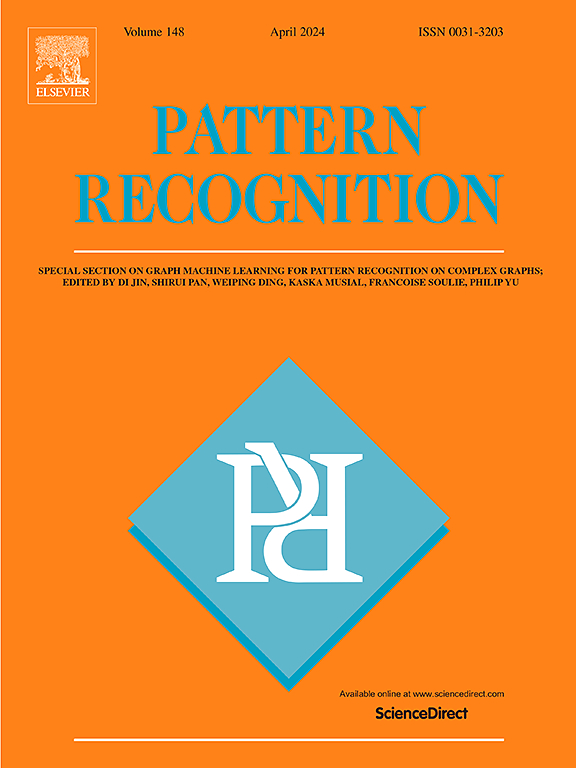Cascade residual learning based adaptive feature aggregation for light field super-resolution
IF 7.5
1区 计算机科学
Q1 COMPUTER SCIENCE, ARTIFICIAL INTELLIGENCE
引用次数: 0
Abstract
Light field (LF) super-resolution aims to enhance the spatial or angular resolutions of LF images. Most existing methods tend to decompose 4D LF images into multiple 2D subspaces such as spatial, angular, and epipolar plane image (EPI) domains, and devote efforts to designing various feature extractors for each subspace domain. However, it remains challenging to select an effective multi-domain feature fusion strategy, including the fusion order and structure. To this end, this paper proposes an adaptive feature aggregation framework based on cascade residual learning, which can adaptively select feature aggregation strategies through learning rather than designed artificially. Specifically, we first employ three types of 2D feature extractors for spatial, angular, and EPI feature extraction, respectively. Then, an adaptive feature aggregation (AFA) module is designed to cascade these feature extractors through multi-level residual connections. This design enables the network to flexibly aggregate various subspace features without introducing additional parameters. We conduct comprehensive experiments on both real-world and synthetic LF datasets for light field spatial super-resolution (LFSSR) and light field angular super-resolution (LFASR). Quantitative and visual comparisons demonstrate that our model achieves state-of-the-art super-resolution (SR) performance. The code is available at https://github.com/haozhang25/AFA-LFSR.
光场(LF)超分辨率旨在提高 LF 图像的空间或角度分辨率。大多数现有方法倾向于将 4D 光场图像分解为多个 2D 子空间,如空间、角度和外极面图像(EPI)域,并致力于为每个子空间域设计各种特征提取器。然而,如何选择有效的多域特征融合策略(包括融合顺序和结构)仍是一项挑战。为此,本文提出了一种基于级联残差学习的自适应特征聚合框架,它可以通过学习而不是人为设计来自适应地选择特征聚合策略。具体来说,我们首先采用三种类型的二维特征提取器,分别用于空间、角度和 EPI 特征提取。然后,我们设计了一个自适应特征聚合(AFA)模块,通过多级残差连接对这些特征提取器进行级联。这种设计使网络能够在不引入额外参数的情况下灵活聚合各种子空间特征。我们在真实世界和合成 LF 数据集上进行了光场空间超分辨率(LFSSR)和光场角度超分辨率(LFASR)的综合实验。定量和直观比较表明,我们的模型达到了最先进的超分辨率(SR)性能。代码见 https://github.com/haozhang25/AFA-LFSR。
本文章由计算机程序翻译,如有差异,请以英文原文为准。
求助全文
约1分钟内获得全文
求助全文
来源期刊

Pattern Recognition
工程技术-工程:电子与电气
CiteScore
14.40
自引率
16.20%
发文量
683
审稿时长
5.6 months
期刊介绍:
The field of Pattern Recognition is both mature and rapidly evolving, playing a crucial role in various related fields such as computer vision, image processing, text analysis, and neural networks. It closely intersects with machine learning and is being applied in emerging areas like biometrics, bioinformatics, multimedia data analysis, and data science. The journal Pattern Recognition, established half a century ago during the early days of computer science, has since grown significantly in scope and influence.
 求助内容:
求助内容: 应助结果提醒方式:
应助结果提醒方式:


